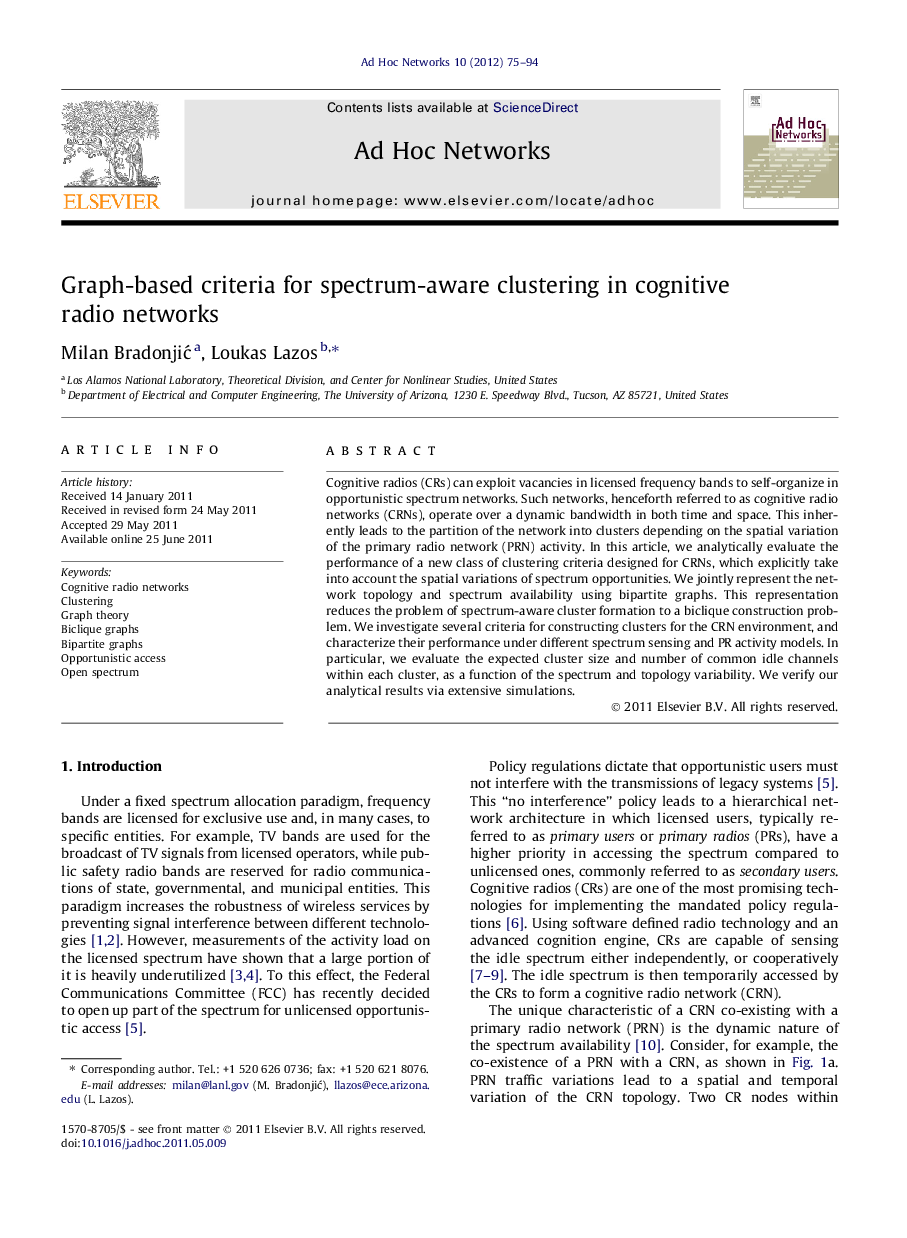| Article ID | Journal | Published Year | Pages | File Type |
|---|---|---|---|---|
| 445547 | Ad Hoc Networks | 2012 | 20 Pages |
Cognitive radios (CRs) can exploit vacancies in licensed frequency bands to self-organize in opportunistic spectrum networks. Such networks, henceforth referred to as cognitive radio networks (CRNs), operate over a dynamic bandwidth in both time and space. This inherently leads to the partition of the network into clusters depending on the spatial variation of the primary radio network (PRN) activity. In this article, we analytically evaluate the performance of a new class of clustering criteria designed for CRNs, which explicitly take into account the spatial variations of spectrum opportunities. We jointly represent the network topology and spectrum availability using bipartite graphs. This representation reduces the problem of spectrum-aware cluster formation to a biclique construction problem. We investigate several criteria for constructing clusters for the CRN environment, and characterize their performance under different spectrum sensing and PR activity models. In particular, we evaluate the expected cluster size and number of common idle channels within each cluster, as a function of the spectrum and topology variability. We verify our analytical results via extensive simulations.
